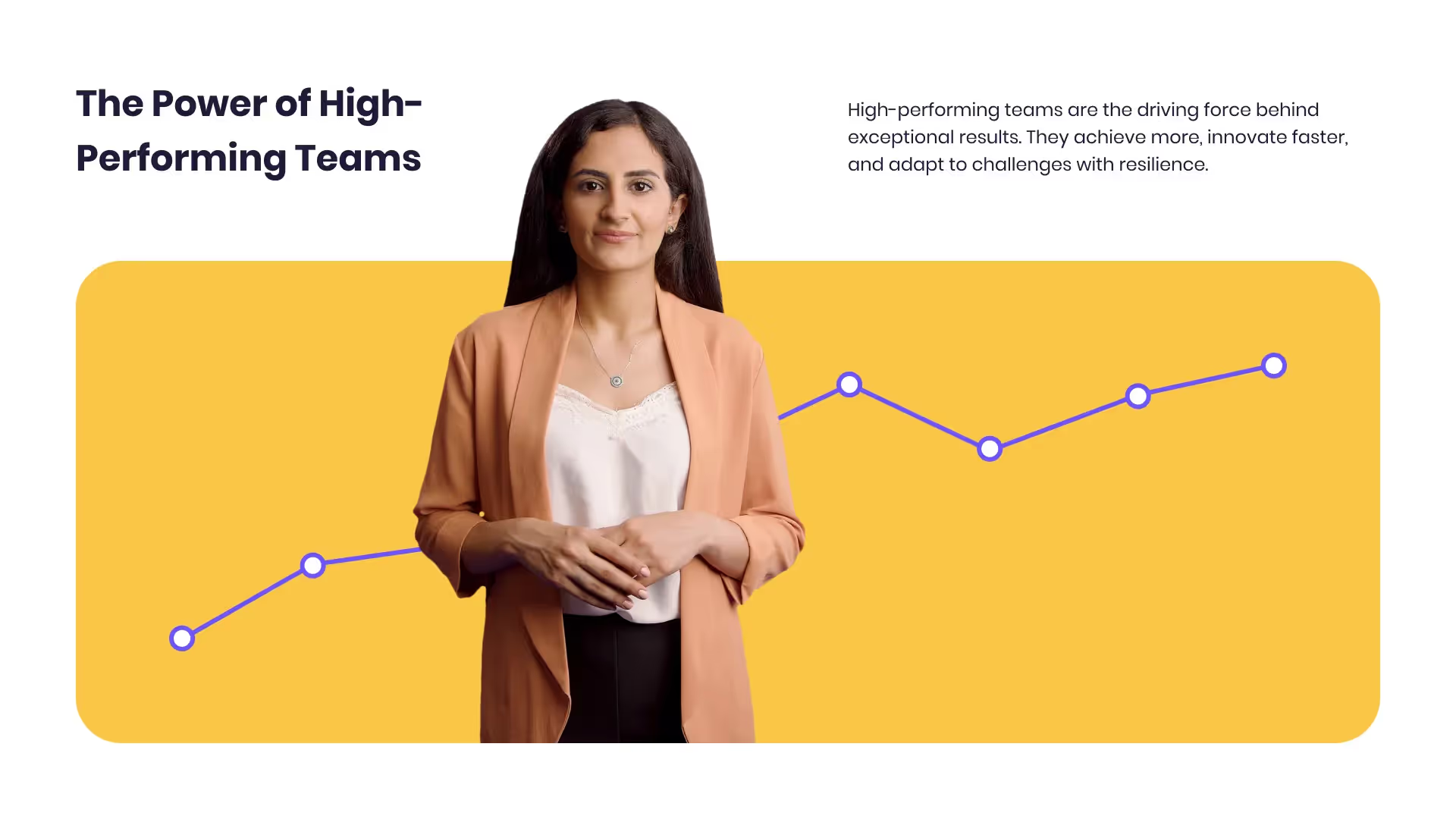Want a personalised avatar?
.avif)
Create an Instant Avatar in under a minute using your phone or camera. Fast, simple, and true to you.

Translate Videos to English: The Complete Enterprise Localization Strategy


When you need to translate videos to English, you're tackling more than a simple language conversion task—you're executing a strategic business decision to expand your content's reach to the world's dominant business language. English remains the lingua franca of global commerce, spoken by 1.5 billion people worldwide and serving as the primary or secondary language in most international business contexts. But traditional video translation is expensive, slow, and operationally complex. How do modern organizations localize video content efficiently without sacrificing quality or breaking the budget?
The strategic answer lies in leveraging AI-powered translation workflows that integrate directly with your video creation process. Instead of treating translation as an afterthought—a separate project requiring new vendors, multiple handoffs, and weeks of coordination—platforms like Colossyan demonstrate how intelligent automation can make multilingual video creation as simple as clicking a button. This comprehensive guide reveals exactly how to translate videos to English at scale, which approach delivers the best ROI for different content types, and how leading organizations are building global video strategies that compound competitive advantage.
Why Translating Videos to English Is a Strategic Priority

English video translation isn't just about accessibility—it's about market access, brand credibility, and competitive positioning in the global marketplace.
The Global Business Case for English Video Content
English holds a unique position in global business. While Mandarin Chinese has more native speakers, English dominates international commerce, technology, and professional communication. Consider these strategic realities:
Market Reach: The combined purchasing power of English-speaking markets (US, UK, Canada, Australia, and English speakers in other countries) exceeds $30 trillion annually. A video available only in another language excludes this massive audience entirely.B2B Decision-Making: In multinational corporations, English is typically the common language regardless of headquarters location. Technical evaluations, vendor assessments, and purchasing decisions happen in English—meaning your product demos, case studies, and training content must be available in English to be seriously considered.Digital Discovery: English dominates online search and content discovery. Google processes English queries differently and more comprehensively than most other languages. Video content in English is more discoverable, more likely to rank, and more frequently shared in professional contexts.Talent Acquisition and Training: For companies with distributed or global teams, English training content ensures every team member—regardless of location—can access critical learning materials. This is particularly important in tech, engineering, and other fields where English is the de facto standard.
The Traditional Translation Bottleneck
Despite these compelling reasons, many organizations underutilize video because traditional translation is prohibitively expensive and operationally complex:
Cost: Professional human translation, voice-over recording, and video re-editing for a 10-minute video typically costs $2,000-5,000 per target language. For videos requiring multiple languages, costs multiply rapidly.Timeline: Traditional workflows span 2-4 weeks from source video completion to translated version delivery—during which your content sits idle rather than driving business value.Coordination Complexity: Managing translation agencies, voice talent, and video editors across time zones creates project management overhead that many teams simply can't sustain.Update Challenge: When source content changes (products update, regulations change, information becomes outdated), the entire translation cycle must repeat. This makes maintaining current multilingual content practically impossible.
These barriers mean most organizations either: (1) don't translate video content at all, limiting global reach, or (2) translate only the highest-priority flagship content, leaving the bulk of their video library unavailable to English-speaking audiences.
How AI Translation Transforms the Economics
AI-powered video translation fundamentally changes this calculus. The global AI video translation market was valued at USD 2.68 billion and is projected to reach USD 33.4 billion by 2034—a 28.7% CAGR—driven by organizations discovering that AI makes translation affordable, fast, and operationally sustainable.
Modern platforms enable workflows where:
- Translation happens in hours instead of weeks
- Costs are 90% lower than traditional services
- Updates are trivial (regenerate rather than re-translate)
- Multiple languages can be created simultaneously (no linear cost scaling)
This transformation makes it practical to translate your entire video library to English, not just select pieces—fundamentally expanding your content's impact and reach.
Understanding Your Translation Options: Subtitles vs. Dubbing

When you translate videos to English, your first strategic decision is how you'll deliver that translation. This isn't just a technical choice—it shapes viewer experience, engagement, and content effectiveness.
English Subtitles: Preserving Original Audio
Adding English subtitles keeps your original video intact while making content accessible to English-speaking audiences.
Advantages:
- Preserves authenticity: Original speaker's voice, emotion, and personality remain unchanged
- Lower production complexity: No need for voice talent or audio replacement
- Cultural preservation: Viewers hear authentic pronunciation, accent, and delivery
- Accessibility bonus: Subtitles also benefit deaf/hard-of-hearing viewers and enable sound-off viewing
Disadvantages:
- Cognitive load: Viewers must split attention between reading and watching
- Reduced engagement: Reading subtitles is less immersive than native language audio
- Visual complexity: For content with heavy on-screen text or detailed visuals, subtitles can overwhelm
Best use cases:
- Documentary or interview content where speaker authenticity is central
- Technical demonstrations where viewers need to focus on visual details
- Content for audiences familiar with reading subtitles
- Social media video (where much viewing happens with sound off)
AI Dubbing: Creating Native English Audio
Replacing original audio with AI-generated English voice-over creates an immersive, native viewing experience.
Advantages:
- Natural viewing experience: English speakers can simply watch and listen without reading
- Higher engagement: Viewers retain more when not splitting attention with subtitles
- Professional polish: AI voices are now remarkably natural and appropriate for business content
- Emotional connection: Voice inflection and tone enhance message impact
Disadvantages:
- Original speaker presence lost: Viewers don't hear the actual person speaking
- Voice quality variance: AI voice quality varies by platform; testing is important
- Lip-sync considerations: If original speaker is prominently on camera, lip movements won't match English audio
Best use cases:
- Training and educational content where comprehension is paramount
- Marketing videos optimizing for engagement and emotional connection
- Content where the speaker isn't prominently on camera
- Professional communications where polished delivery matters
The Hybrid Approach: Maximum Accessibility
Many organizations implement both:
- Primary audio: AI-generated English dubbing for immersive viewing
- Secondary option: Subtitles available for viewer preference
This combination delivers maximum accessibility and viewer choice, though it requires slightly more production work.
The Colossyan Advantage: Integrated Translation
This is where unified platforms deliver exponential efficiency. Rather than choosing between subtitles and dubbing as separate production tracks, Colossyan lets you generate both from a single workflow:
1. Your original script is auto-translated to English
2. AI generates natural English voice-over automatically
3. English subtitles are created simultaneously
4. You can even generate an entirely new video with an English-speaking AI avatar
This integrated approach means you're not locked into a single translation method—you can test different approaches and provide multiple options to accommodate viewer preferences.
Step-by-Step: How to Translate Videos to English Efficiently

Executing professional video translation requires a systematic approach. Here's the workflow leading organizations use to translate content efficiently and at scale.
Phase 1: Prepare Your Source Content
Quality translation starts with quality source material. Invest time here to ensure smooth downstream processes.
Obtain accurate source transcription:
If your video was created from a script, you're already ahead—that script is your starting point. If not, you need an accurate transcript of what's being said.
Modern AI transcription tools like Whisper AI, Otter.ai, or built-in platform features deliver 95%+ accuracy for clear audio. Upload your video, receive the transcript, and spend 15-20 minutes reviewing for errors in:
- Proper names and terminology
- Technical jargon specific to your industry
- Numbers, dates, and specific figures
- Acronyms and abbreviations
This investment dramatically improves translation quality since errors in transcription cascade into translation mistakes.
Clean and optimize the script:
Before translation, refine your source text:
- Remove filler words (um, uh, like, you know)
- Clarify ambiguous phrases that might confuse machine translation
- Add context notes for terms that shouldn't be translated (product names, company names)
- Break very long sentences into shorter, clearer statements
Well-prepared source text yields dramatically better translations—spending 30 minutes optimizing can save hours of correction later.
Phase 2: Execute the Translation
With clean source text, translation becomes straightforward—though quality varies significantly by approach.
Machine Translation (Fast and Affordable):
AI translation services like Google Translate, DeepL, or built-in platform features provide instant translation at zero or minimal cost.
Best practices:
- DeepL typically delivers more natural results than Google Translate for European languages
- ChatGPT or Claude can provide contextual translation if you provide background ("Translate this technical training script from French to English, maintaining a professional but accessible tone")
- Split long documents into manageable chunks for free-tier services with character limits
For straightforward business content, modern machine translation delivers 85-95% quality that requires only minor human refinement.
Human-in-the-Loop (Optimal Quality):
The strategic approach: leverage AI speed, apply human expertise where it matters most.
1. Generate initial translation with AI (5 minutes)
2. Have a bilingual reviewer refine for naturalness and accuracy (20-30 minutes)
3. Focus human time on critical sections: opening hook, key messages, calls-to-action
This hybrid delivers near-professional quality at a fraction of traditional translation costs and timelines.
Professional Translation (When Stakes Are Highest):
For mission-critical content where precision is non-negotiable (legal disclaimers, medical information, regulated communications), professional human translation remains appropriate. Use AI to accelerate by providing translators with high-quality first drafts they refine rather than starting from scratch.
Phase 3: Generate English Audio
With your translated English script perfected, create the audio component.
Option A: AI Voice Generation
Modern text-to-speech systems create natural-sounding English audio instantly:
Using standalone TTS services:
- Google Cloud Text-to-Speech, Microsoft Azure, or Amazon Polly offer professional quality
- Test multiple voices to find the best fit for your content
- Adjust pacing and emphasis for technical or complex sections
Using integrated platforms like Colossyan:
- Select from 600+ professional English voices (different accents: American, British, Australian, etc.)
- Choose voice characteristics matching your content (authoritative, friendly, technical, warm)
- AI automatically handles pacing, pronunciation, and natural inflection
- Generate perfectly synchronized audio in minutes
Option B: Human Voice Recording
For flagship content where authentic human delivery adds value:
- Hire professional English voice talent (costs $200-500 for a 10-minute script)
- Or record in-house if you have fluent English speakers and decent recording equipment
- Provides maximum authenticity but sacrifices the speed and update-ease of AI
Option C: Regenerate with English-Speaking Avatar
The most transformative approach: don't just translate the audio—regenerate the entire video with an English-speaking AI avatar:
With platforms like Colossyan:
1. Upload your English-translated script
2. Select a professional AI avatar (can match original avatar's demographics or choose differently)
3. Generate a complete new video with the avatar speaking fluent English
4. Result: a fully native English video, not obviously a translation
This approach delivers the most immersive experience for English-speaking viewers—they receive content that feels created specifically for them, not adapted from another language.
Phase 4: Synchronize and Finalize
Bring together all elements into a polished final video.
For subtitle-only approach:
- Use free tools like Subtitle Edit or Aegisub to create perfectly timed SRT/VTT files
- Ensure subtitles are readable (appropriate font size, good contrast, strategic positioning)
- Follow language-specific conventions (English subtitles typically 15-20 words per screen)
- Test on different devices to ensure legibility
For dubbed audio:
- Replace original audio track with new English voice-over using video editors like DaVinci Resolve or Adobe Premiere
- Ensure perfect synchronization with on-screen action, transitions, and visual cues
- Balance audio levels to match any music or sound effects
- Add English subtitles as an optional track for maximum accessibility
For regenerated avatar videos:
- Review the AI-generated English video for quality and accuracy
- Make any necessary refinements (script edits, pacing adjustments)
- Regenerate if needed (takes minutes, not hours)
- Export in required formats and resolutions
Quality assurance checklist:
- Watch complete video at full speed (don't just spot-check)
- Verify pronunciation of technical terms, names, and acronyms
- Confirm visual sync at key moments
- Test audio levels across different playback systems
- Review on mobile devices if that's where content will be consumed
Phase 5: Optimize and Distribute
Maximize your translated content's impact through strategic optimization and distribution.
SEO optimization:
- Upload English transcripts as webpage content (makes video searchable)
- Create English titles and descriptions optimized for target keywords
- Add relevant tags and categories for platform algorithms
- Include timestamped chapter markers for longer content
Platform-specific formatting:
- Create multiple aspect ratios for different platforms (16:9 for YouTube, 1:1 for LinkedIn, 9:16 for Instagram Stories)
- Generate thumbnail images with English text
- Optimize length for platform norms (shorter cuts for social media)
Distribution strategy:
- Publish on platforms where English-speaking audiences congregate
- Include in English-language email campaigns and newsletters
- Embed in English versions of web pages and help centers
- Share in professional communities and forums
Performance tracking:
- Monitor completion rates, engagement, and conversion metrics
- Compare performance of translated vs. original content
- Use insights to refine future translation approaches
- A/B test different translation methods (subtitles vs. dubbing) to identify what resonates
This complete workflow—from source preparation through optimized distribution—can be executed in 1-2 days with AI assistance, compared to 2-4 weeks for traditional translation. The efficiency gain makes translating your entire video library practical, not just select flagship content.
Scaling Video Translation Across Your Organization

Translating one video efficiently is valuable. Building systematic capability to translate all appropriate content continuously is transformative. Here's how to scale video translation into a sustainable organizational capability.
Building Translation-First Workflows
The most efficient approach: build translation considerations into content creation from the start, rather than treating it as an afterthought.
Create translatable source content:
- Write scripts in clear, straightforward language (avoid idioms, slang, culturally-specific references that don't translate well)
- Use AI avatars for original content rather than human presenters (makes translation via avatar regeneration seamless)
- Structure content modularly (update individual sections without re-translating entire videos)
- Maintain brand consistency through templates and brand kits
Centralize translation workflows:
Rather than each department or team translating independently:
- Establish clear processes and tool standards
- Create shared libraries of translated assets (glossaries, voice preferences, avatar selections)
- Maintain translation memory (previously translated phrases for consistency)
- Enable team collaboration through platforms with built-in workflow features
Colossyan's enterprise features support this centralized approach with brand kits, team workspaces, and approval workflows.
Prioritizing Content for Translation
Not all content has equal translation priority. Strategic organizations segment their video libraries:
Tier 1: Immediate translation
- Customer-facing product content (demos, explainers, tutorials)
- Core training materials essential for all team members
- Marketing content for English-speaking markets
- Compliance and safety content required for operations
Tier 2: Regular translation
- New product announcements and updates
- Recurring communications and updates
- Expanding training library content
- Support and troubleshooting videos
Tier 3: Opportunistic translation
- Archive content with continued relevance
- Secondary marketing materials
- Supplementary training and development content
This tiered approach ensures high-value content is always available in English while building toward comprehensive library translation over time.
Measuring Translation ROI
Justify continued investment by tracking specific metrics:
Efficiency metrics:
- Translation cost per minute of video
- Time from source completion to English version availability
- Number of videos translated per month/quarter
Reach metrics:
- Viewership growth in English-speaking markets
- Engagement rates (completion, interaction, sharing)
- Geographic distribution of viewers
Business impact metrics:
- Lead generation from English-language video content
- Product adoption rates in English-speaking customer segments
- Training completion rates for English-speaking team members
- Support ticket reduction (as English help content improves self-service)
Organizations using AI translation report 5-10x increases in content output with 70-90% cost reduction compared to traditional translation—compelling ROI that justifies scaling investment.
Frequently Asked Questions About Translating Videos to English
What's the Most Cost-Effective Way to Translate Videos to English?
For most business content, AI-powered translation with strategic human review delivers the best cost-quality balance:
Approach: Use AI for transcription, translation, and voice generation, then have a fluent English speaker review for 20-30 minutes to catch errors and improve naturalness.Cost: Typically $20-100 per video depending on length and platform fees, versus $2,000-5,000 for traditional professional services.Quality: Achieves 90-95% of professional translation quality at a fraction of the cost.
For the absolute lowest cost, fully automated AI translation (no human review) works acceptably for internal or low-stakes content, though quality is variable.
How Accurate Is AI Translation for Business Video Content?
Modern AI translation delivers 85-95% accuracy for straightforward business content. Accuracy is highest for:
- Common language pairs (major languages to English)
- Standard business terminology
- Clear, well-structured source scripts
- Informational/educational content
Accuracy drops for:
- Highly specialized jargon or industry-specific terminology
- Idioms, cultural references, humor
- Legal or medical content requiring precision
- Ambiguous phrasing in source material
The strategic approach: let AI handle the bulk translation quickly, then apply focused human review to critical sections and specialized terminology.
Should I Use Subtitles or Replace the Audio Entirely?
This depends on your content type and audience context:
Choose subtitles when:
- Original speaker's authenticity is important (interviews, testimonials, expert content)
- Viewers need to focus on complex on-screen visuals
- Content will be consumed on social media (where much viewing is sound-off)
- You want to preserve cultural authenticity of original language
Choose dubbed audio when:
- Comprehension and retention are paramount (training, education)
- Engagement and immersion matter (marketing, storytelling)
- Original speaker isn't prominently on camera
- Professional polish is important
Many organizations create both versions, letting viewers choose their preference.
Can I Translate One Video Into Multiple Languages Simultaneously?
Yes, and this is where AI translation delivers exponential efficiency gains. With platforms like Colossyan:
1. Translate your source script into multiple target languages (AI handles this in minutes)
2. Generate videos for each language simultaneously (not sequential—truly parallel processing)
3. Create 10 language versions in the time traditional methods would produce one
This is transformative for global organizations that previously couldn't afford comprehensive localization. A training video can launch globally in all needed languages on the same day, rather than rolling out language-by-language over months.
How Do I Ensure Translated Content Maintains Brand Voice?
Maintaining brand consistency across languages requires strategic planning:
Establish translation guidelines:
- Document tone, formality level, and personality for your brand in English specifically
- Provide example translations (good and bad) for reference
- Define how to handle brand names, product names, and taglines
Use consistent AI voices:
- Select specific English voices that match your brand personality
- Use the same voices across all English content for consistency
- Document voice selections in brand guidelines
Leverage platform brand kits:
- Tools like Colossyan let you save brand colors, fonts, logos, and voice preferences
- Apply automatically to every video for visual and auditory consistency
Implement review processes:
- Have English-speaking brand or marketing team review translations before publication
- Check that tone, personality, and key messages align with brand guidelines
- Create feedback loops to continuously improve translation quality
Ready to Scale Your English Video Translation?
You now understand how to translate videos to English efficiently, which approaches deliver the best ROI, and how leading organizations are building scalable multilingual video strategies. The transformation from traditional translation bottlenecks to AI-powered workflows isn't just about cost savings—it's about making comprehensive video localization operationally feasible.
Colossyan Creator offers the most comprehensive solution for video translation, with auto-translation into 80+ languages, 600+ natural AI voices including extensive English voice options, and the unique ability to regenerate entire videos with English-speaking avatars. For global organizations, this integrated capability delivers ROI that standalone translation services simply can't match.
The best way to understand the efficiency gains is to translate actual content from your library. Experience firsthand how workflows that traditionally took weeks can be completed in hours.
Ready to make your video content globally accessible?Start your free trial with Colossyan and translate your first video to English in minutes, not weeks.

Networking and Relationship Building
Use this template to produce videos on best practices for relationship building at work.

Developing high-performing teams
Customize this template with your leadership development training content.

Course Overview template
Create clear and engaging course introductions that help learners understand the purpose, structure, and expected outcomes of your training.
Frequently asked questions





Didn’t find the answer you were looking for?















%20(1).avif)
.webp)

